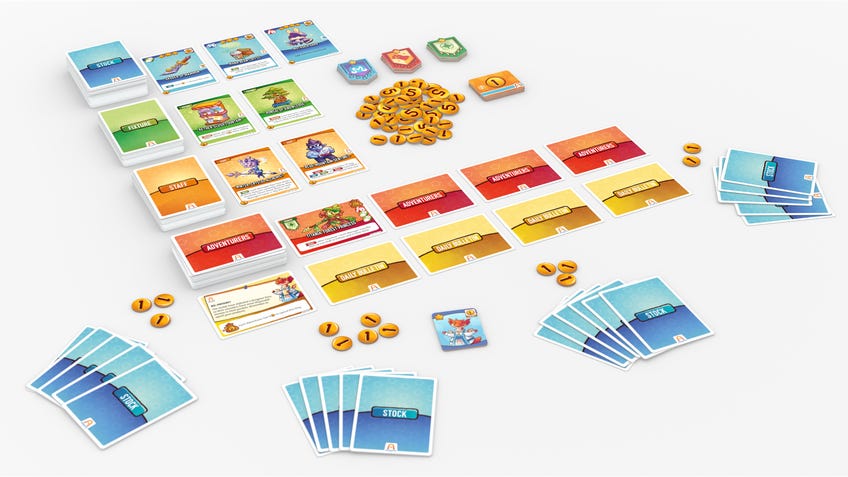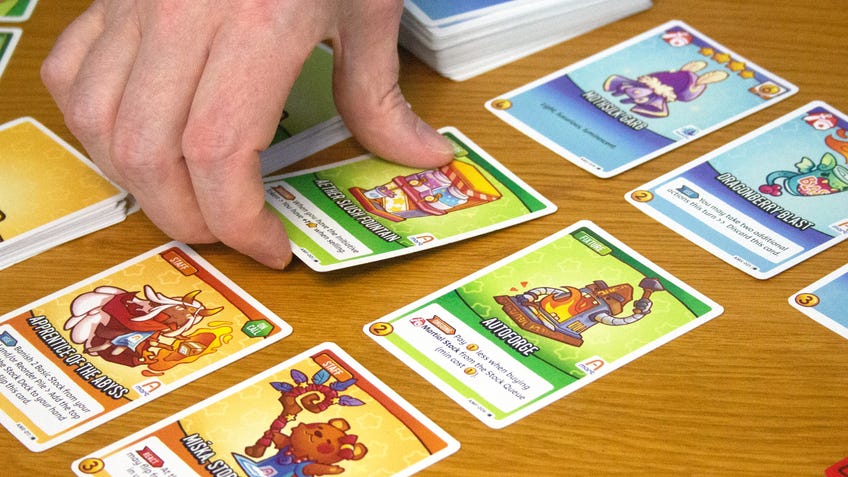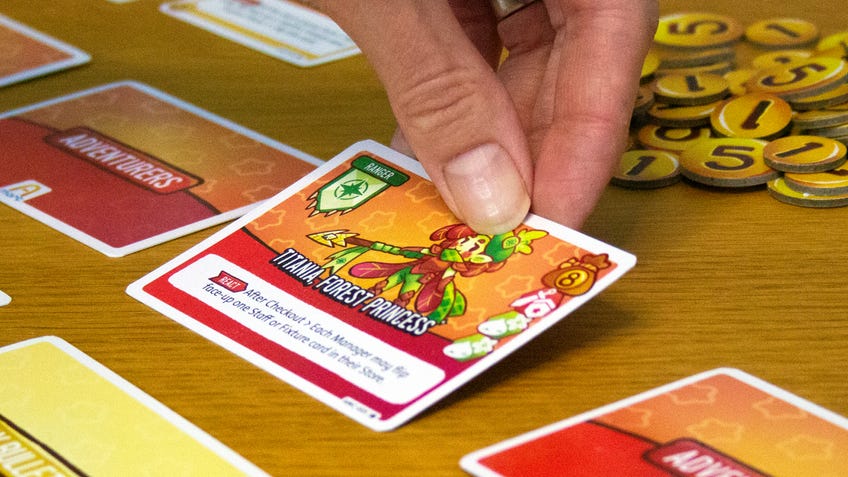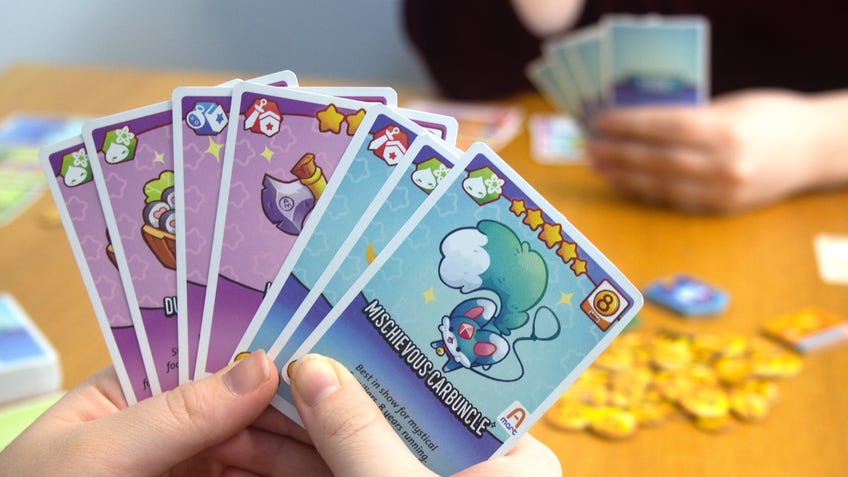Adventure Mart board game review - cutesy charm overcomes inconsistent gameplay in fantasy auction deckbuilder
Taking stock.
Want to hear an adult squealing like an excited child? Show them Adventure Mart. It’s not clear why this game of selling gear to passing adventurers should have cute, chibi-style art but it works and it’s wonderful. The names are full of in-jokes like the "Importonomicon" with its lascivious green tongue. The images burst with character and detail such as the ghoulish "Worker of Nights" who has a mop, bucket and a tiny lollipop stuck to his tail. It’s so endearing it makes you want to buy the cards simply for the pleasure of having them in your hand.
The real purpose of buying up stock, staff and store fixtures is to make your shop more attractive to adventurers. The core action in the game is to grab a facedown adventurer card from that turn’s row and start auctioning your stock to them. Each wants one or more stock types, from magical to melee, so you offer them cards of that kind from your hand and total up the stars on them. Other players try and outbid you with higher star offers, if they’ve got the cards.
It’s so endearing it makes you want to buy the cards simply for the pleasure of having them in your hand.
There’s a catch. Each stock item has a value, separate from its star rating, and each adventurer has a maximum amount of gold to spend. You can offer them extra to win the bid, but you won’t get a penny more than they’ve got in their belt pouch and you’ll have less stock for the next auction. Whether it’s worth the risk is the calculation that Adventure Mart throws at you on every twist of every turn.
Everyone starts with the same deck of ten stock items. Each turn you draw five, and you can buy new ones from a face-up row. This is a deckbuilding game with the twist that bought stock goes into your hand, rather than your discard pile, allowing you to use it right away. Most stock has greater value and star rating than the basic cards. Some have special powers you can use by playing the card instead of selling it.

Staff and fixtures are also available to buy, blind or from a face-up selection. You can use a fixture each turn once bought. Staff are more powerful but, like real employees, need paying each time you use them. But if you want them in your shop, the game throws you another curveball.
A few rows of cards becomes a simmering cauldron of impossible tensions.
Auctions are the main way to make money. If you start an auction you get a bonus star on your offer, so that’s what you want to be doing. You want to be buying and using stock, staff and fixtures, too. Yet, in most cases, each is an independent action - forcing you to choose. The more you add to your store in a turn, the less likely you are to start and win auctions. A few rows of cards becomes a simmering cauldron of impossible tensions. It’d be almost unbearable if there wasn’t all that cute art to distract you.

“In most cases” is an important caveat. Many of the cards break the core loop in interesting ways. Some adventurers steal from the richest stores, others are guild members who give bonuses when selling to adherents of the same group. There are staff cards who can sabotage other player’s offerings or even risk restarting a sale after it’s finished. Many fixtures and stock items let you draw more cards or thin your deck.
Between them, you’re given lot of strategic leverage to work with. Buying fixtures that discount stock, then buying in bulk to cash in on the savings is a valid strategy, for example. But like every strategy in Adventure Mart, making it work means a constant re-estimation of what everything is worth. As in a real saleroom, taking your eyes off the prize for a moment can relegate you to second place.

The sense of being cobbled together works in the game’s favour.
All these interlocking concepts give Adventure Mart an odd, piecemeal feeling. Deckbuilding is important, but players don’t cycle their decks often enough to make it a deckbuilder. The auction is important, but the random selection of stock and adventurer makes it quite a gamble. Plus, there’s no power curve. You might get a rich adventurer on the first turn and have to sell them Dungeoneering Bento for a pittance. Or you could end up flogging the Philosopher’s Stone to a penniless squire at the climax. Both are unsatisfying.
Yet this sense of being cobbled together also works in the game’s favour, making it feel innovative and quirky. Combine that with the great art, the range of card effects and the dynamic game state and you get a title that’s greater than the sum of its scavenged parts. So whether you’re a seasoned strategic shopper or a first-time family buyer, pop on down to Adventure Mart. There’s sure to be something on the shelves to tempt you.

